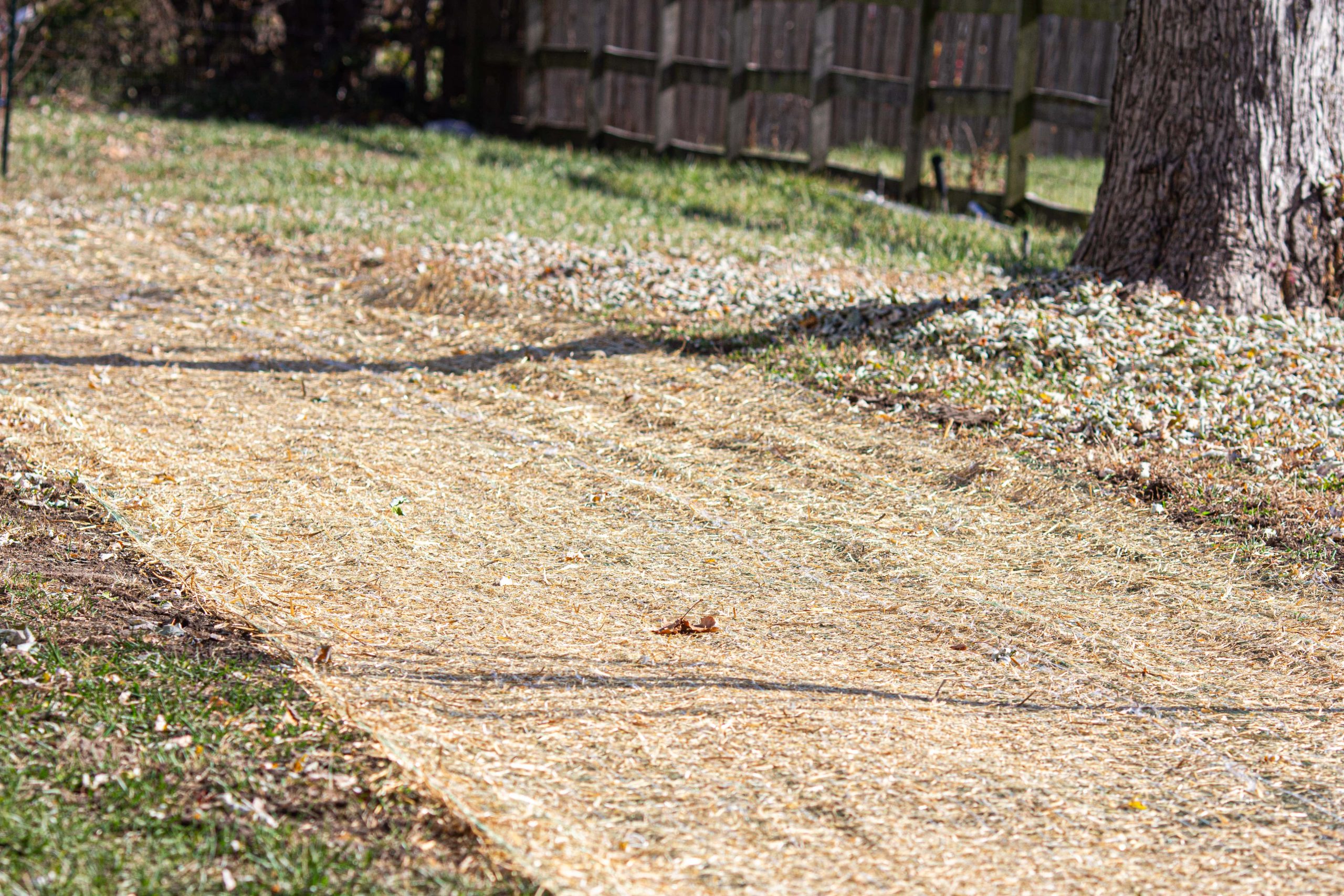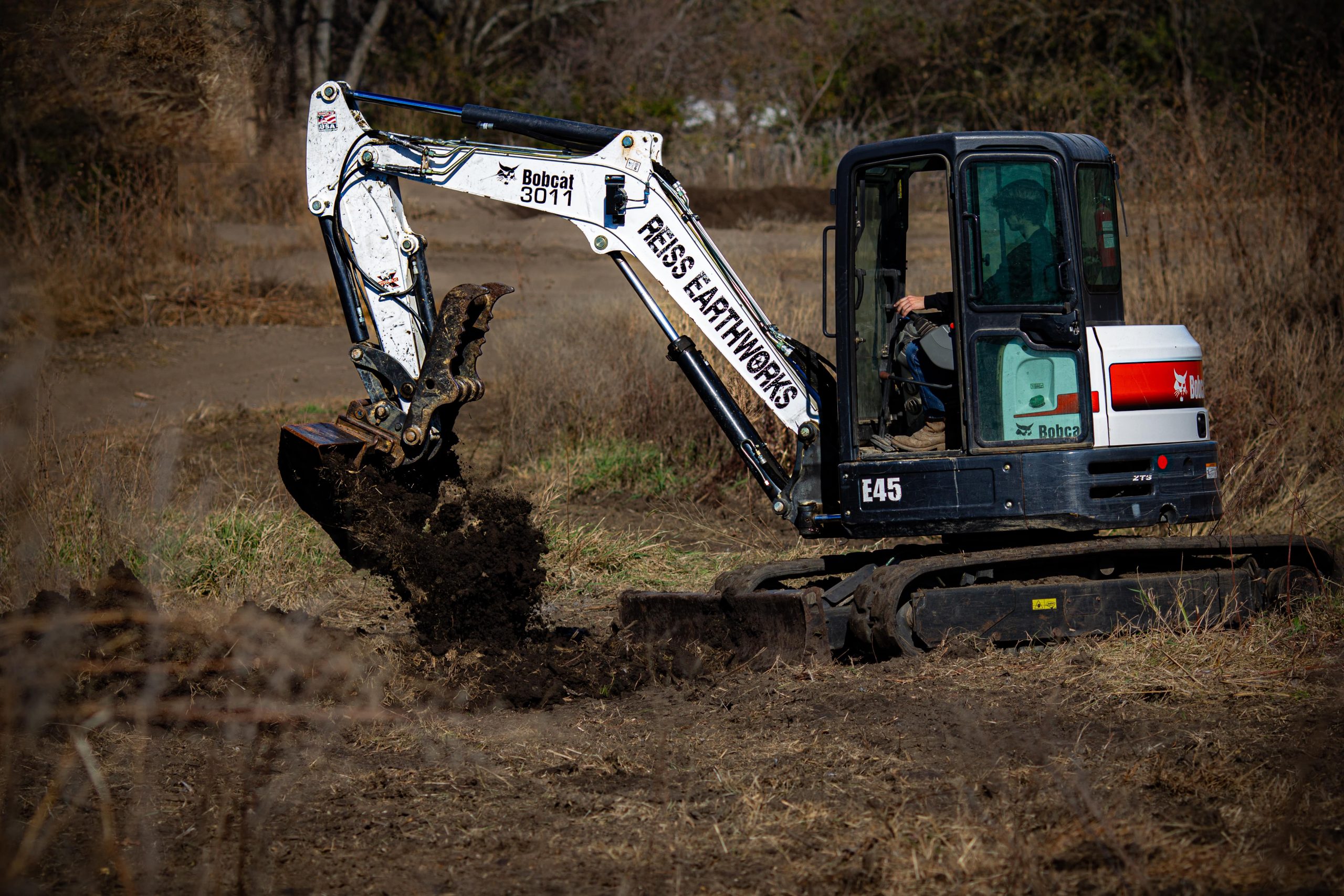
Grass or other vegetative growth are not just for, providing aesthetic value; vegetation also protects the soil. As newly seeded vegetation takes root, it acts as an anchor, keeping the soil in place and significantly reducing the risk of major erosion. On sites that have been recently disturbed or where the conditions have gone unimproved and are bare, erosion happens quickly. Soil preservation via established vegetation, starting with seeding, is essential after any project that disturbs the earth as it prevents erosion and helps to keep the soil in its desired shape. Our seeding services can often be performed in conjunction with our earthwork services. Once we determine your needs through a consultation, we can develop a seeding project plan.
Our Revegetation Process
Three innovative techniques, broadcast seeding, incision seeding, and hydroseeding, play pivotal roles in establishing and revitalizing green spaces. Each method possesses unique characteristics, applications, and benefits.
Broadcast Seeding
Broadcast seeding is widely adopted for its efficiency and suitability for large-scale projects. This technique involves evenly spreading seeds over the soil surface, utilizing specialized equipment for broad and uniform distribution, ensuring comprehensive coverage. It is particularly effective for establishing expansive lawns, meadows, cover crops, and fields. This method is an ideal choice for projects where quick and efficient seed distribution is paramount, covering large areas rapidly. The benefits include efficiency, cost-effectiveness, and versatility, making it suited for a variety of vegetation types, fostering biodiversity.
Broadcast seeding can be enhanced by incorporating straw matting and erosion control blankets (ECB). These additional elements provide stabilization to the soil, preventing erosion, and creating an environment conducive to seed germination. The combination of broadcast seeding with straw matting and ECB further reinforces its effectiveness in establishing green spaces with enhanced coverage and stability.
Incision Seeding
Incision seeding methods such as drill or slit seeding stands out for its precision, ensuring optimal seed-to-soil contact. Mechanically placing seeds into the soil at controlled depths allows for accurate spacing and germination conditions. This method is ideal for establishing lawns, pastures, and reseeding projects, enhancing germination rates, and providing a well-established stand of vegetation. The benefits include accuracy, efficiency, and versatility, making it suitable for various soil types and vegetation varieties.

Hydroseeding
Hydroseeding is an advanced method involving spraying a mixture of seeds, mulch, and tackifiers onto the soil surface. This technique leverages a slurry of ingredients to create an optimal environment for seed germination and establishment. Hydroseeding excels in large-scale projects like roadside revegetation, commercial properties, large rural lots, and any setting with slopes. Its ability to promote quick germination makes it a preferred choice for erosion-prone areas. The benefits include erosion control, efficiency, and customization, tailoring the slurry to specific soil and vegetation requirements.
The Importance of Revegetation
Although sedimentation and erosion are natural occurrences, the act of excavating often rapidly increases the rates of these processes to dangerous levels for your property and the environment. Seeding an area is a great way to keep erosion and sedimentation in check.
It’s important to note that specific steps and material choices can vary based on factors such as climate, soil conditions, construction modalities, and intended use. Consulting with professional services such as civil or geotechnical engineering, or hydrologists is always a good idea to tailor the installation process to the unique circumstances of your project.










